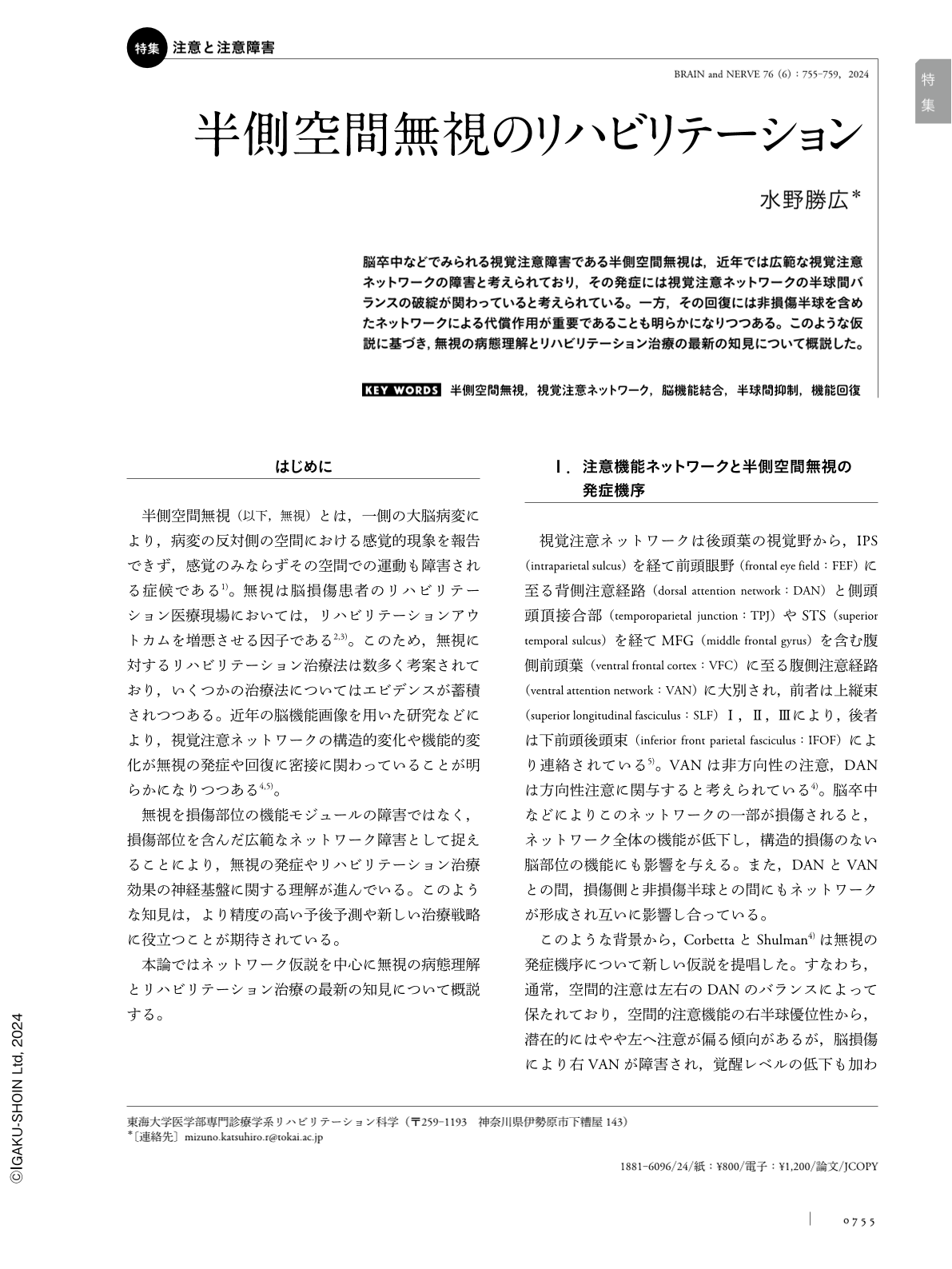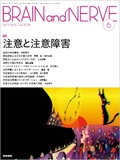Japanese
English
- 有料閲覧
- Abstract 文献概要
- 1ページ目 Look Inside
- 参考文献 Reference
脳卒中などでみられる視覚注意障害である半側空間無視は,近年では広範な視覚注意ネットワークの障害と考えられており,その発症には視覚注意ネットワークの半球間バランスの破綻が関わっていると考えられている。一方,その回復には非損傷半球を含めたネットワークによる代償作用が重要であることも明らかになりつつある。このような仮説に基づき,無視の病態理解とリハビリテーション治療の最新の知見について概説した。
Abstract
Unilateral spatial neglect (USN) is a symptom of unilateral brain damage resulting in failure to report sensory phenomena in the contra-lesional space. It is associated with motor impairment as well as sensory deficits. Recent research suggests that USN, may be caused by a disruption in the interhemispheric balance of the visual attention network. Based on this hypothesis, non-invasive brain stimulation (NIBS), such as repetitive transcranial magnetic stimulation (rTMS) and transcranial direct current stimulation (tDCS), is utilized in the rehabilitation of USN patients. Presently, inhibitory stimulation by continuous theta burst stimulation (cTBS) on contra-lesional parietal cortex are believed to be the most promising method. Conversely, compensation by attentional network of the non-lesioned hemisphere plays an important role in the recovery of USN. Recent imaging studies revealed that functional and structural connectivity of attentional networks within a lesioned hemisphere and between lesioned and non-lesioned hemispheres affects spontaneous recovery and effectiveness of rehabilitation approach such as prism adaptation therapy. These findings are useful in elucidating the pathophysiology of USN and predicting functional outcome. Furthermore, we hope that understanding the pathophysiology will enable the development of new rehabilitation strategies and appropriate treatment selection.

Copyright © 2024, Igaku-Shoin Ltd. All rights reserved.


